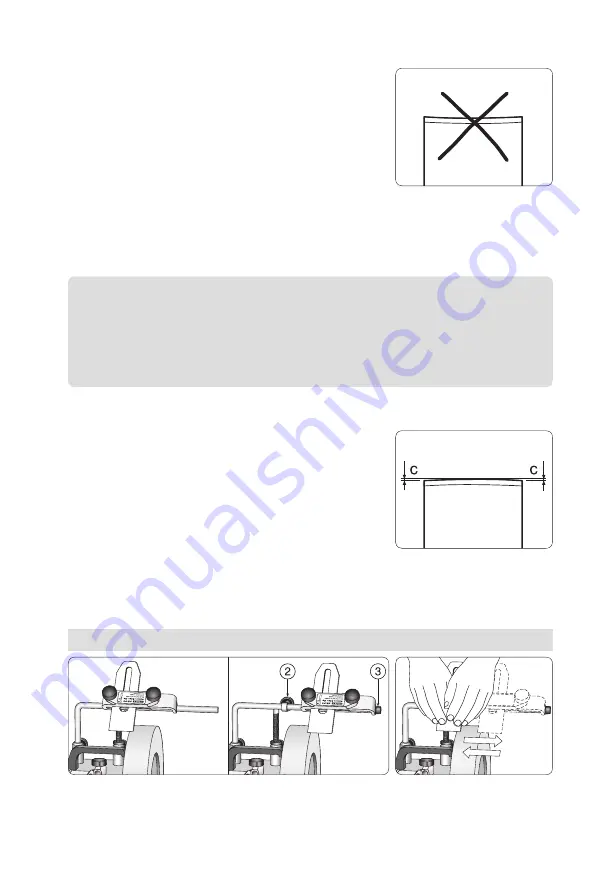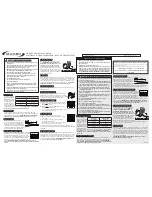
125
Sharpening a Plane Iron
To get a 100 % straight edge when sharpening wide tools
such as a plane iron, you need to pay attention to a couple
of factors that influence the result. The grinding jig gives
the tool a constant edge angle towards the stone but the
shape achieved depends on how much
pressure
you apply
on the right or left side. Also the
time
you spend sharpening
on each side influences the shape.
If you press equally on both sides and move the tool evenly across the stone, you will get
a concave and not a straight edge. This is because the middle part is exposed to a longer
sharpening time than the sides. Compensate for this effect by spending more time sharpen-
ing on the sides.
Camber Shape
Most types of plane irons should have a slight convex
shape or a camber. The degree of camber depends on
type of plane and should be approximately the same as
the thickness of the shavings. The camber (c) varies from
0.8 mm (
1/32
") for a jack plane down to 0.05 mm (0.002") for
a smooth plane. A scrub plane should have a much larger
camber, which cannot be achieved in the SE-76 jig. Use
the Tool Rest SVD-110. The camber is achieved by press-
ing harder on the sides. A longer protrusion of the blade in the jig will facilitate this effect,
as most plane irons are a bit flexible. On a thick, stiff tool you create the camber shape by
spending more time sharpening on the sides.
Setting the safety stops
First mount the inner, movable stop (2) so the tool rests with
approx. 6 mm (¼") on the stone. Then mount the outer stop (3),
which is fixed and independent of the tool width.
Move the tool continuously
between the two stops. Spend
more time sharpening the sides.
Important
Like for all Tormek jigs (except for the planer/jointer blade and
moulding knife attachments) you should keep in mind that there is no grind-
ing depth stop. This means that you decide with your hands – pressure and
grinding time – where the grinding takes place. Check the shape frequently
and grind more, where it is needed.


























